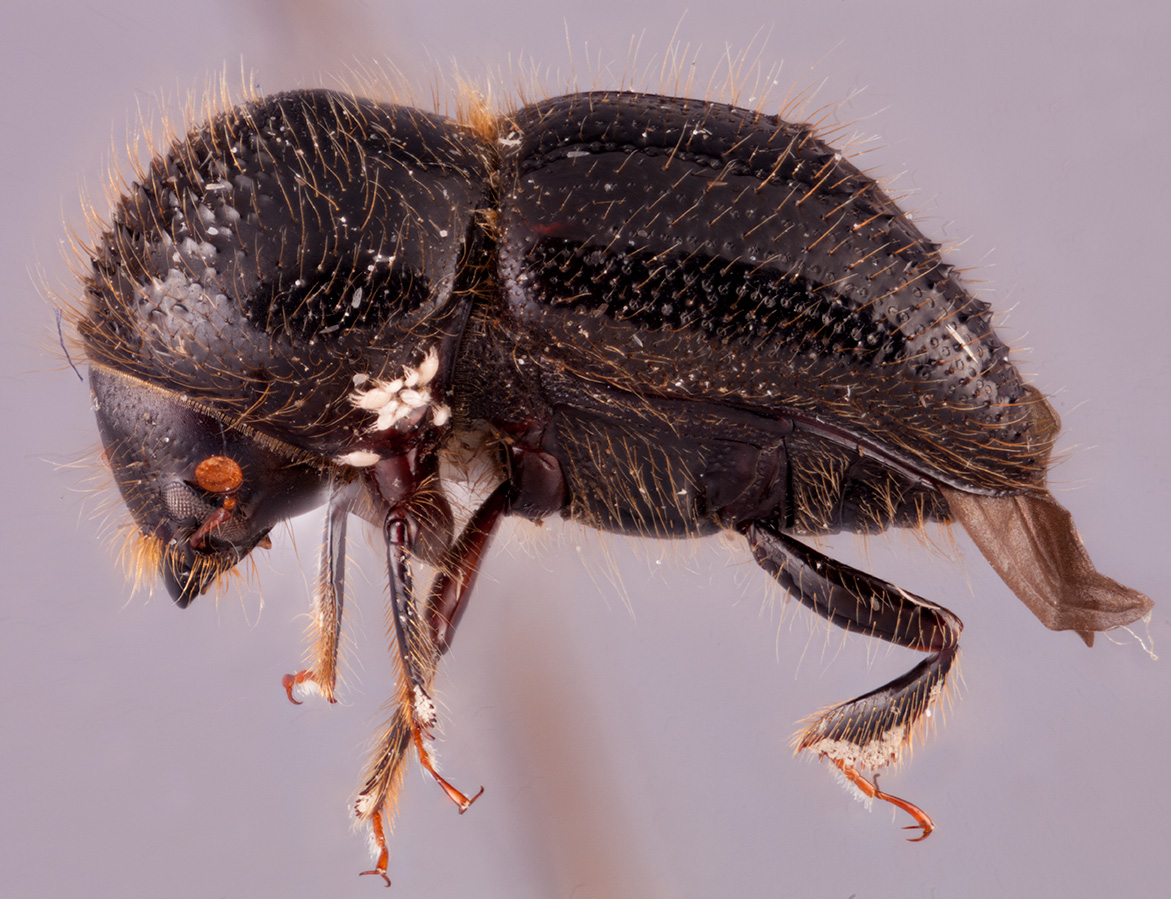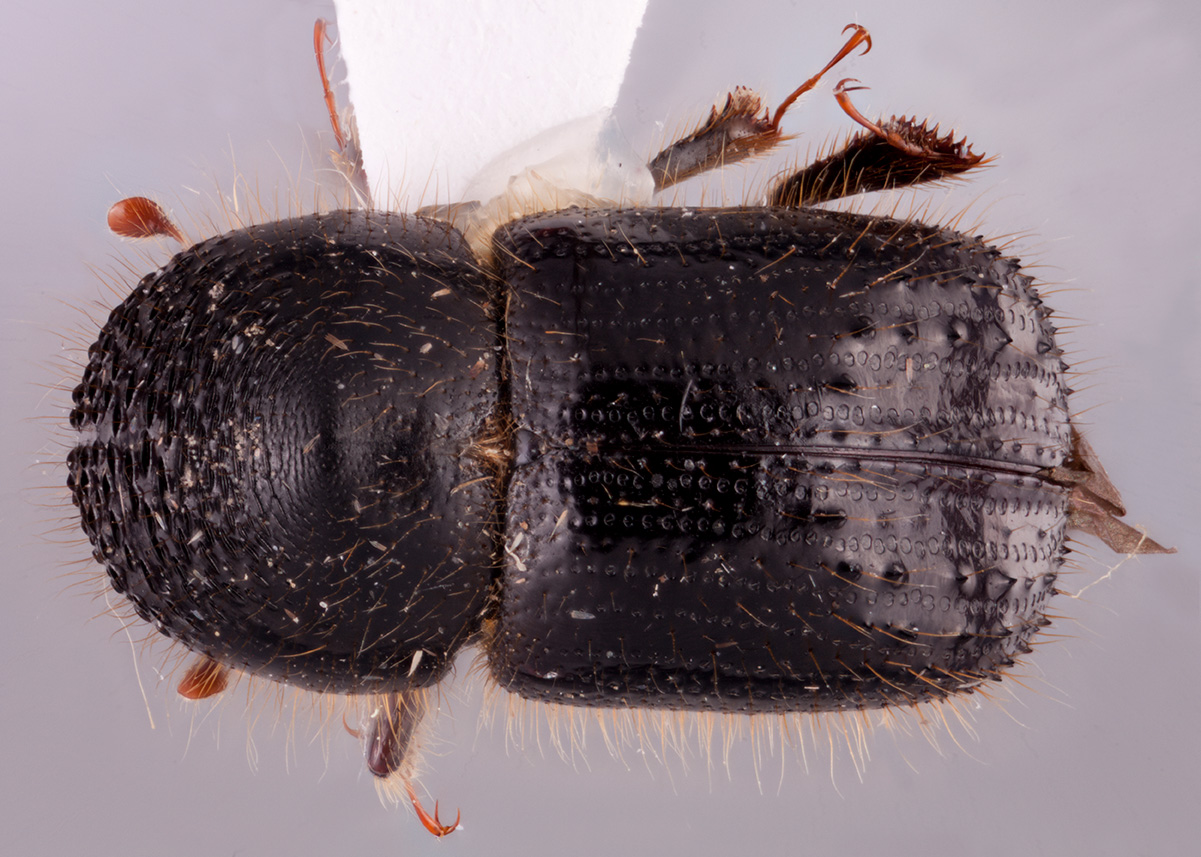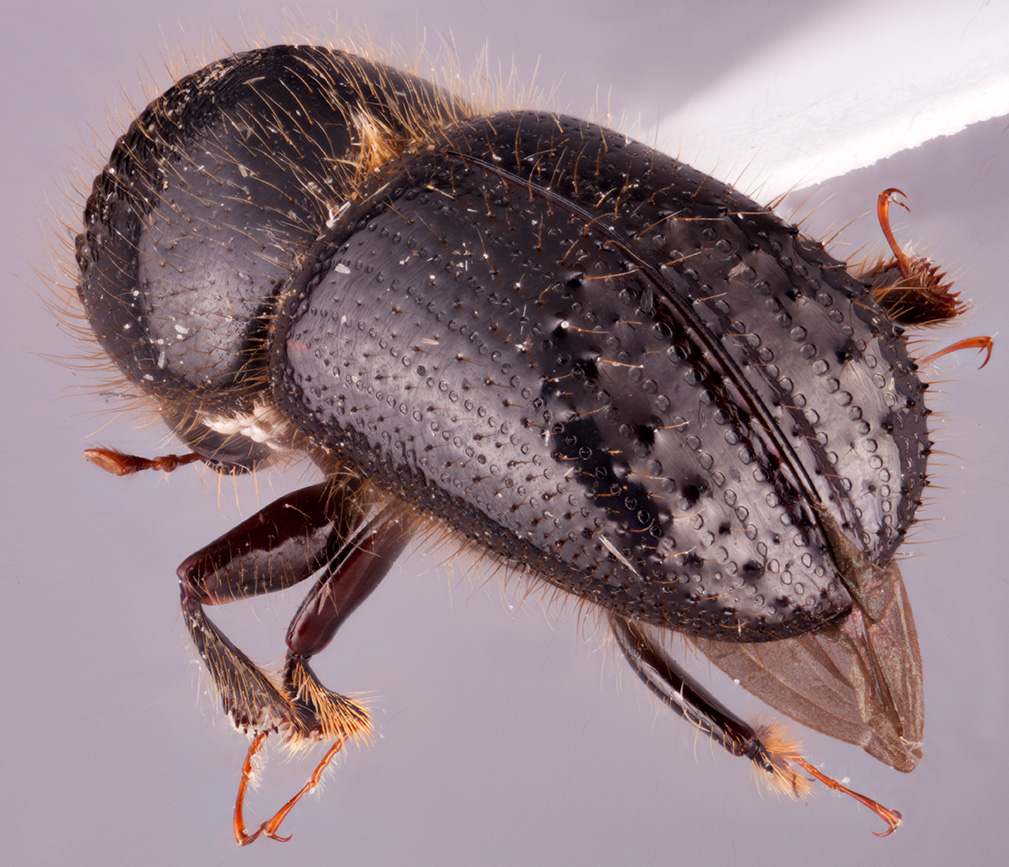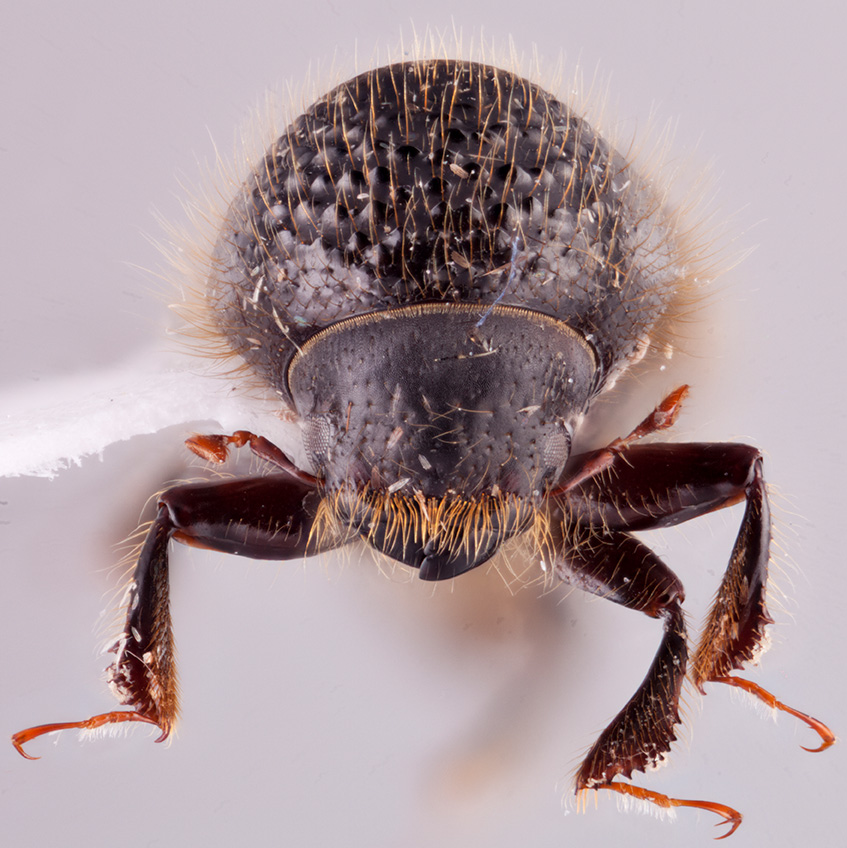Anisandrus niger
|
Anisandrus niger lateral; R.K. Osborn |
|
Anisandrus niger dorsal; R.K. Osborn |
|
Anisandrus niger declivity; R.K. Osborn |
|
Anisandrus niger frontal; R.K. Osborn |
Taxonomic history
Xyleborus niger Sampson, 1912: 247.
Anisandrus niger (Sampson): Beaver and Liu, 2018: 538.
Diagnosis
5.8−5.9 mm long (mean = 5.87 mm; n = 3); 2.0−2.19 times as long as wide. This species can be distinguished by its large size, the mesonotal mycangial tuftmycangial tuft:
tuft of setae that denotes the mycangia exterior opening
 the length of the scutellumscutellum:
the length of the scutellumscutellum:
a shield-like sclerotized plate located at the midpoint of the elytral base
; elytralelytral:
pertaining to the elytra
discdisc:
the flat central upper surface of any body part (e.g. pronotum and elytra) convexconvex:
convexconvex:
appearing rounded ; declivitaldeclivital:
; declivitaldeclivital:
pertaining to the elytral declivity
interstriae impunctate; elytralelytral:
pertaining to the elytra
surface smooth, shiningshining:
appearing glossy or bright in luster; referring to a surface that is polished and reflects light well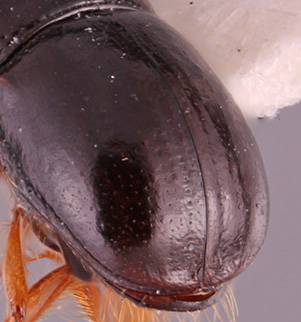 to weakly shagreenedshagreened:
to weakly shagreenedshagreened:
covered with a closely-set roughness, like shark skin 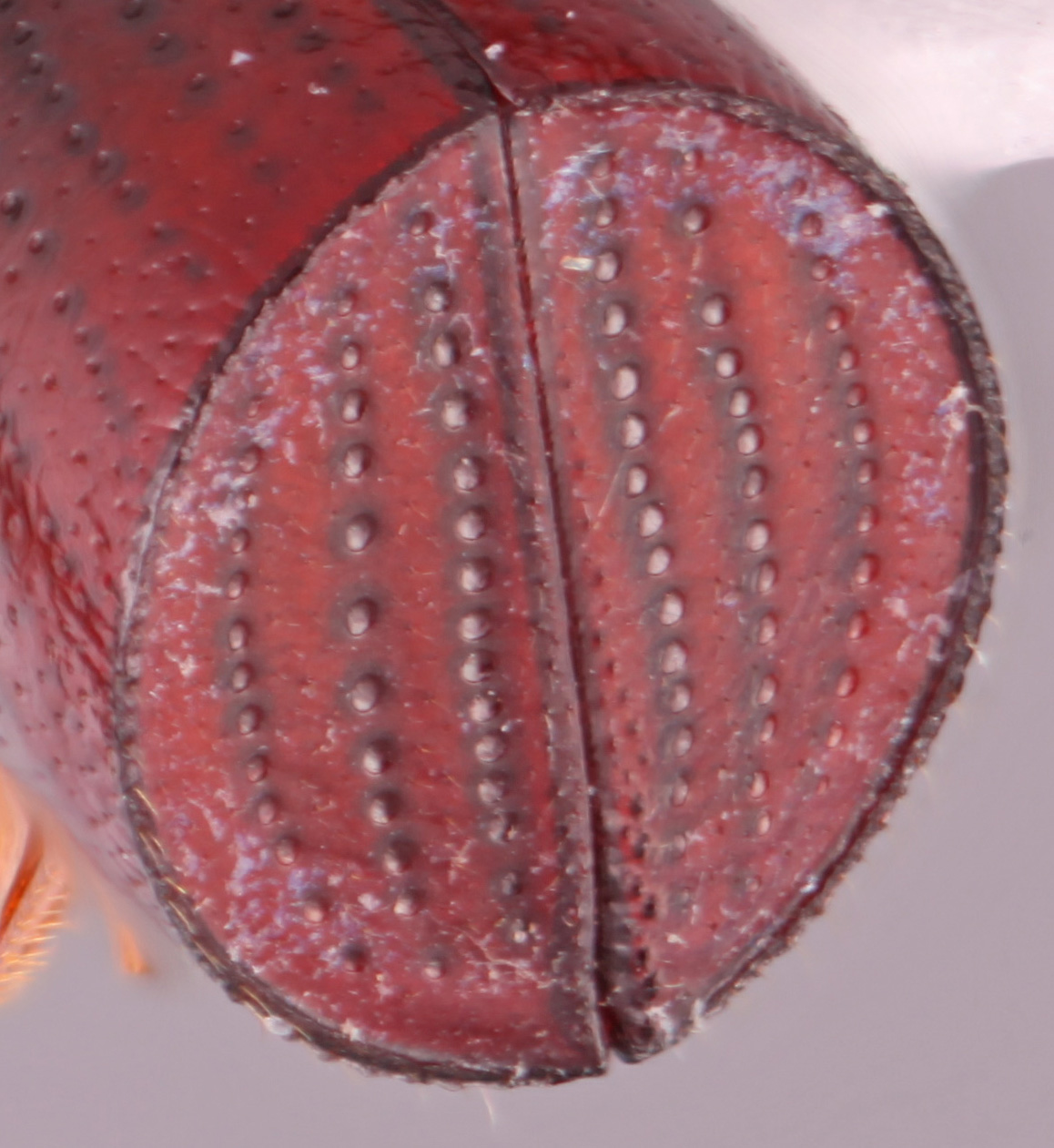 ; declivitaldeclivital:
; declivitaldeclivital:
pertaining to the elytral declivity
face flattened when viewed laterally; declivitydeclivity:
downward slope of either the pronotum or elytra
 appearing weakly bisculcate; declivitaldeclivital:
appearing weakly bisculcate; declivitaldeclivital:
pertaining to the elytral declivity
interstriae 2 weakly impressedimpressed:
a depression in a surface
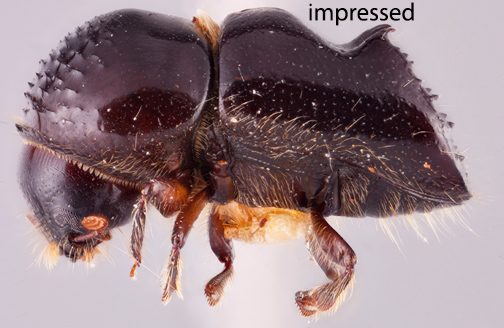 , declivitaldeclivital:
, declivitaldeclivital:
pertaining to the elytral declivity
interstriae 1, 3 tuberculate to apexapex:
point or edge furthest from the body; opposite of base
 , interstriaeinterstria:
, interstriaeinterstria:
longitudinal spaces along the elytra between the striae, which is not as<br />
impressed and bear smaller punctures.
 2 with a tubercletubercle:
2 with a tubercletubercle:
a small knob-like or rounded protuberance of the exoskeleton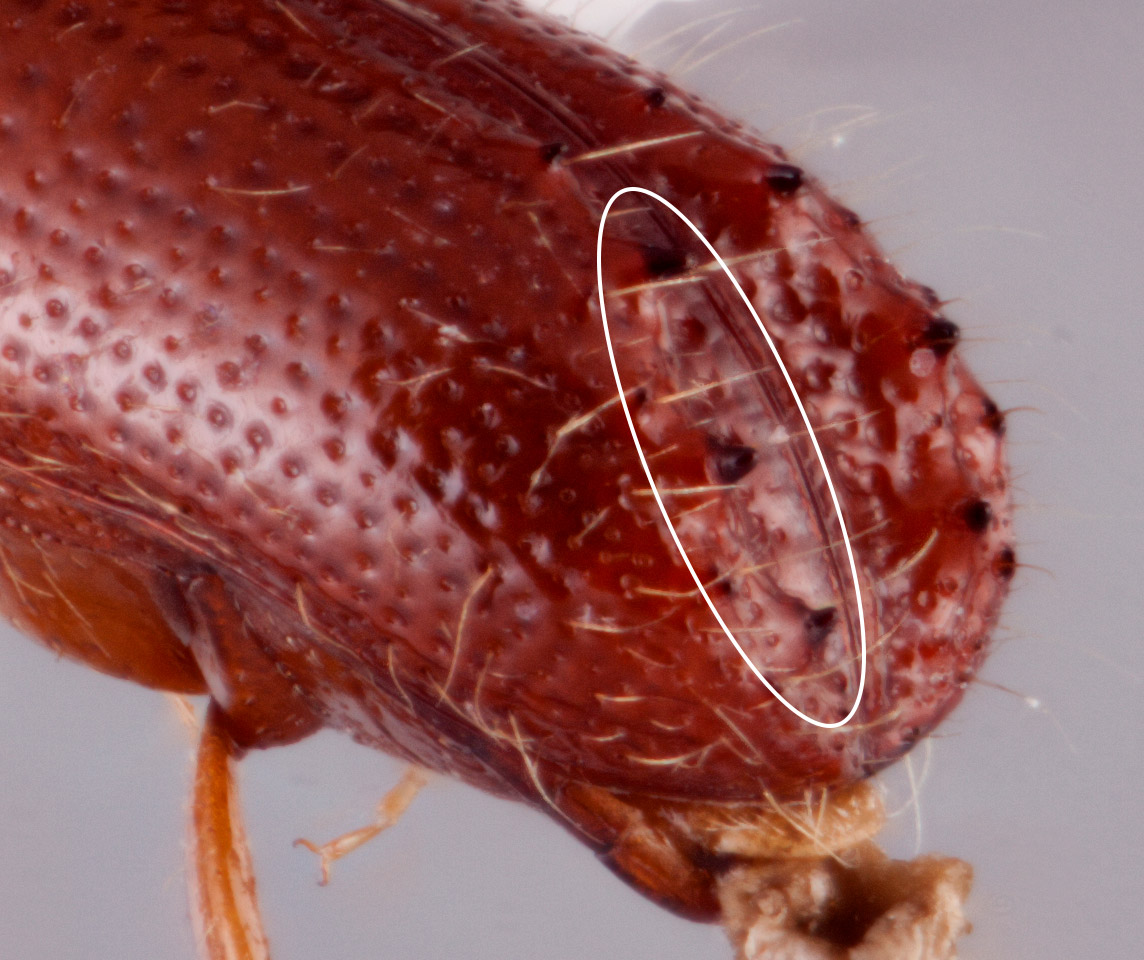 at summitsummit:
at summitsummit:
highest point, used for pronotum and elytra, denotes the peak between pronotal frontal slope and disc, and between elytral disc and declivity and 3−4 irregularly spaced granulesgranule:
and 3−4 irregularly spaced granulesgranule:
a small rounded protuberance, like grains of sand
 along its length; and posterolateralposterolateral:
along its length; and posterolateralposterolateral:
relating to end of the side part/portion
 margin rounded.
margin rounded.
May be confused with
Anisandrus apicalis, A. congruens, A. cristatus, A. geminatus, and A. sinivali
Distribution
Bhutan, Laos, Myanmar, Nepal, Vietnam
Host plants
unknown (Smith et al. 2020bSmith et al. 2020b:
Smith SM, Beaver RA, and Cognato AI. 2020b. A monograph of the Xyleborini (Coleoptera, Curculionidae, Scolytinae) of the Indochinese Peninsula (except Malaysia) and China. ZooKeys 983: 1-442. https://doi.org/10.3897/zookeys.983.52630)
DNA data
Sequences available for COI and CAD.
COI: MN619847
CAD: MN620140

